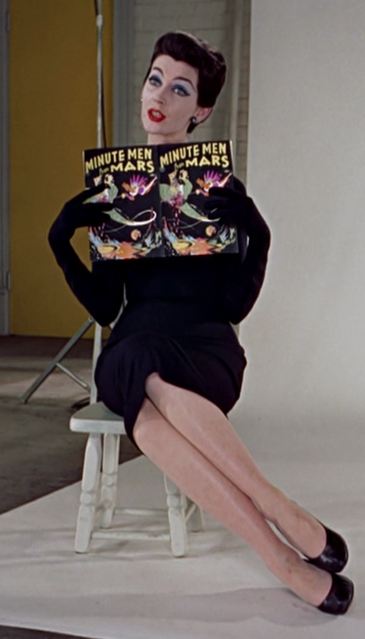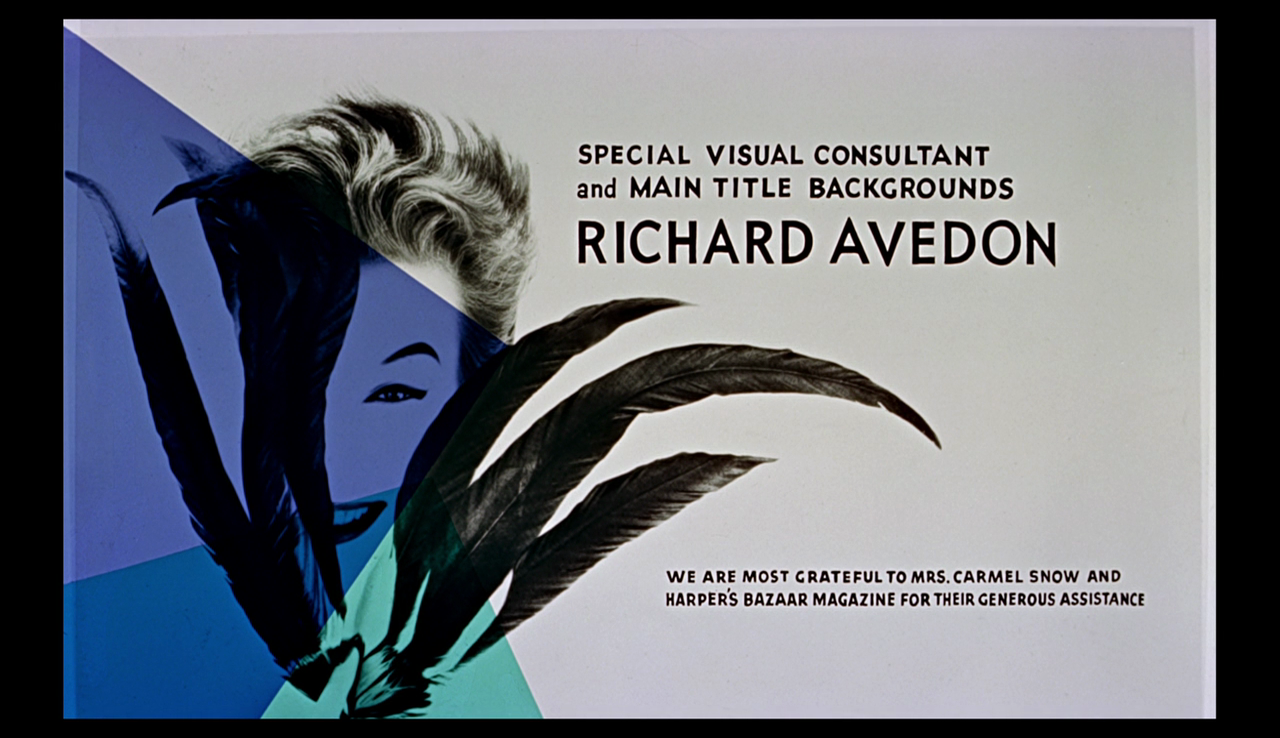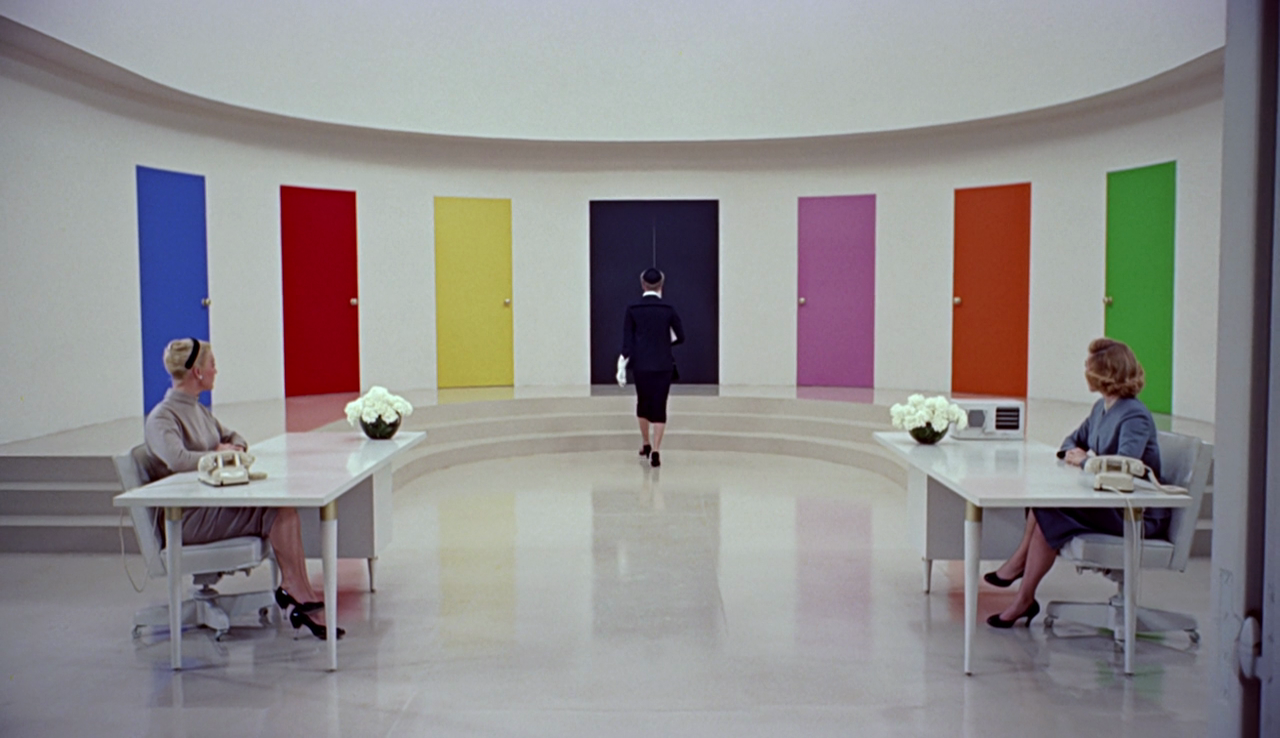"The Furniture" is our series on Production Design by Daniel Walber. Click on the images to see them in magnified detail.
 Funny Face (1957) is not really a complicated movie, visually or otherwise. Its production design doesn’t express inner turmoil or repressive social structures, nor does it take the characters on any sort of elaborate journey. And in some scenes it’s downright boring, director Stanley Donen essentially stepping back to allow Fred Astaire and Audrey Hepburn room to dance.
Funny Face (1957) is not really a complicated movie, visually or otherwise. Its production design doesn’t express inner turmoil or repressive social structures, nor does it take the characters on any sort of elaborate journey. And in some scenes it’s downright boring, director Stanley Donen essentially stepping back to allow Fred Astaire and Audrey Hepburn room to dance.
But production design doesn’t have to be profound to be good, or even Oscar-worthy. And while I wouldn’t have voted for Funny Face for the Academy Awards, I do think it’s worth a look. Besides, its design does sort of have a message: that the opposite of fashion is books, and that any attempt to combine the two will lead to utter chaos. Is it serious? No, of course not, but it manages to be fun and chic at the same time.
It all starts with a gorgeous opening sequence designed by legendary photographer Richard Avedon, who also served as “Special Visual Consultant”...
It’s very sleek, setting up the vibe at “Quality Magazine.” We open at its executive offices, a minimalist set with a regimented sense of color - primaries on one side, secondaries the other.
The managing editor in question is Maggie Prescott (Kay Thompson, in one of her only film roles) and those black double doors lead to her office - my favorite set in the film. It’s clear that she’s very particular about color. The pills and pencils on her desk match the pillows on the window seat.
It’s a neutral space full of accents; beige walls, carpet and furniture as a backdrop for Maggie’s ideas. It’s a representation of the mind of a 1950s editor, one who makes such bold decisions as devoting the entire next issue to a single color.
And that color is pink! This decision leads into a fabulous sequence of living photographs, presumably directed by Avedon himself.
These minimalist fantasies, and the musical number that follows them, constitute the best set design and art direction in the film. Even those colorful doors get a makeover.
The pink issue is a huge hit, but the next issue is in crisis pretty quickly. Photographer Dick Avery (Astaire) just can’t seem to get a convincingly “intellectual” photo out of Marion (played by Dovima, one of Avedon’s most famous collaborators).
And so the whole team heads to Greenwich Village. They wind up at a bookshop staffed by Jo Stockton (Hepburn), a passionate reader of Empathicalist philosophy who hates fashion. The shop is the antithesis of Avedon’s minimalism, particularly after the Quality Magazine crew has torn it apart. But Dick can’t get Jo out of his head and convinces Meggie to take her to Paris and make her the magazine’s new star.
Enticing her to Europe doesn’t make things much better - and it also marks a shift away from the Avedon style. After all, why set up minimalist sets when you can use Paris instead?
The final fashion show takes place indoors, in a large ballroom dripping with ornate French detail - though, like Maggie’s offices back in New York, it is also mostly beige with pink accents.
It’s also prescient, in a bizarre way. Thompson would go on to direct the now-legendary fashion show at Versailles in 1974, when a lineup of American designers (including Halston and Oscar de la Renta) would crash the European establishment. The finale fashion show in Funny Face, however, very nearly doesn’t come off at all. A fountain bursts at the press conference, tearing apart the display and getting everyone soaked.
We eventually get a happy ending, of course, but it’s not terribly satisfying. The meandering discourse of high culture and low culture, pop culture and counterculture, doesn’t really amount to anything. At the end of the day, the only losers are the beatniks and the only winner is Paris, and even then it’s cramped by all the rain. It’s hard to believe Jo will really be happy, either as a model or as the girlfriend of a photographer twice her age.
The last scene is strange, an oddly-lit blur by a stream. The two leads stand improbably on a tiny wooden raft, while some unbothered doves have a snack. The aqueduct at the back seems to suggest, well, nothing. Which is perhaps just as well.
previously this season on 'The Furniture'
The Golem (1920)
Safe (1995)
Frida (2002)
Joan of Arc (2019)
Shirley (2020)











